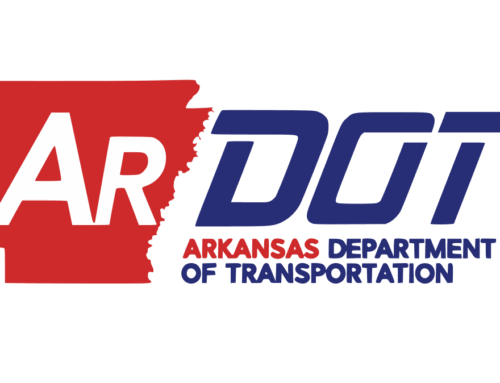The Board of Directors is an essential component of any nonprofit’s successful operations. Serving as the governing body, the board plays a crucial role in providing oversight, strategic direction, and accountability, ensuring the organization fulfills its mission and achieves its goals effectively. Nonprofit and public sector boards encompass a wide range of entities, including educational institutions, healthcare organizations, government boards and commissions, trade associations, professional boards, start-up or venture capital boards, joint boards or boards of trustees, and community-based organization boards. Each of these boards serves a unique purpose and plays a vital role in guiding and overseeing their respective sectors and operations.
Throughout my extensive engagement with more than 45 advisory boards, commissions, and similar entities requiring board oversight, I have acquired invaluable insights. Among the crucial lessons learned from these experiences is the recognition that every board possesses its distinctive characteristics. The influence of board members can vary significantly, ranging from being dynamic advocates driving an organization’s growth to playing more passive roles, akin to cogs in a larger mechanism.
Over time, I have observed a wide array of board dynamics and structures. Certain boards have proven to be influential advocates, displaying a passionate commitment to the organization’s mission and taking a proactive stance in strategic decision-making. Their hands-on approach and unwavering dedication have yielded tangible outcomes, fueling the organization’s growth and amplifying its impact.
On the other hand, I have also come across boards where members assumed more passive roles, merely fulfilling their duties with minimal engagement. In such instances, the potential to initiate transformative change and foster growth was often constrained, and the organization’s progress impeded.
Moreover, the success of a board is contingent on the organization’s culture and leadership. A transparent and inclusive environment fosters active participation and encourages board members to contribute their expertise fully. Conversely, a closed or hierarchical structure can deter board members from harnessing their full potential, inhibiting the board’s overall effectiveness.
Therefore, as a board member, I have strived to be an active advocate for the organizations I serve. I believe that being actively engaged, offering innovative ideas, and fostering collaboration among board members can significantly impact an organization’s growth and effectiveness.
Within the organization, the Board of Directors plays a significant role, overseeing, managing, and participating in ten essential aspects that influence its overall performance and growth.
1. Governance and Policy Setting: The board is responsible for setting the mission, vision, and overall strategic direction of the nonprofit. They establish policies and guidelines that govern the organization’s operations, ensuring alignment with its mission.
2. Fiduciary Oversight: Board members have a legal duty to act in the best interests of the organization. They are responsible for financial oversight, budget approval, and ensuring that the nonprofit’s resources are used appropriately and responsibly.
3. Hiring and Supervising Executive Leadership: The board appoints and evaluates the executive director or CEO of the nonprofit. They provide guidance and support to the leadership team and ensure that the organization is effectively managed.
4. Fundraising and Resource Development: Board members are often expected to participate in fundraising efforts, using their networks and influence to attract donors and secure resources for the organization.
5. Advocacy and Public Relations: The board serves as ambassadors for the nonprofit, promoting its mission and advocating for its causes. They may also engage in public relations and networking to increase the organization’s visibility and impact.
6. Risk Management and Compliance: The board ensures that the organization operates within legal and ethical boundaries. They identify potential risks and take measures to mitigate them, safeguarding the organization’s reputation and assets.
7. Monitoring and Evaluation: The board monitors the nonprofit’s progress towards its goals, assessing the effectiveness of programs and initiatives. Regular evaluations help identify areas for improvement and strategic adjustments.
8. Ensuring Accountability and Transparency: The board ensures that the nonprofit maintains transparency in its operations, finances, and decision-making processes. They are accountable to stakeholders, including donors, beneficiaries, and the public.
9. Long-term Sustainability Planning: Boards are responsible for ensuring the nonprofit’s long-term sustainability. They plan for the future, assess financial stability, and make strategic decisions to secure the organization’s continuity.
10. Conflict Resolution: In situations where conflicts arise within the organization, the board acts as a mediator and makes decisions to resolve issues in a fair and constructive manner.
Overall, the Board of Directors serves as the governing body of the nonprofit organization, carrying out its responsibilities to fulfill the organization’s mission and achieve its goals effectively. If you step up as a board member, do it with your sleeves rolled up. Your involvement makes a difference. The components of an organization’s operations work together to ensure the smooth functioning of the nonprofit organization, allowing it to effectively deliver its mission and make a positive difference in the communities it serves because community matters.
In community,
Dr. Pat
Patricia A. Clary is a consultant who champions the advancement of strategic community impact agendas to addressintricate societal challenges through collaborative efforts, convening leadership, and effective governance.
You can contact her through the following channels:
– LinkedIn: https://www.linkedin.com/in/pat-clary/
– Facebook: PatriciaAClaryPhD
© 2023 All rights reserved.






